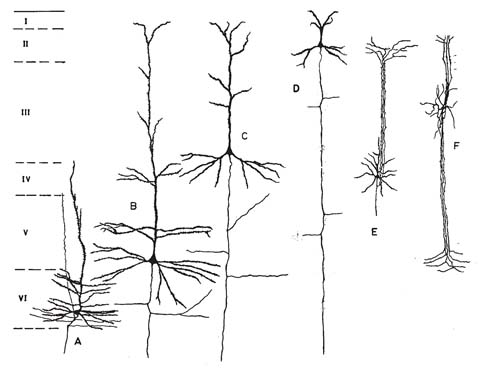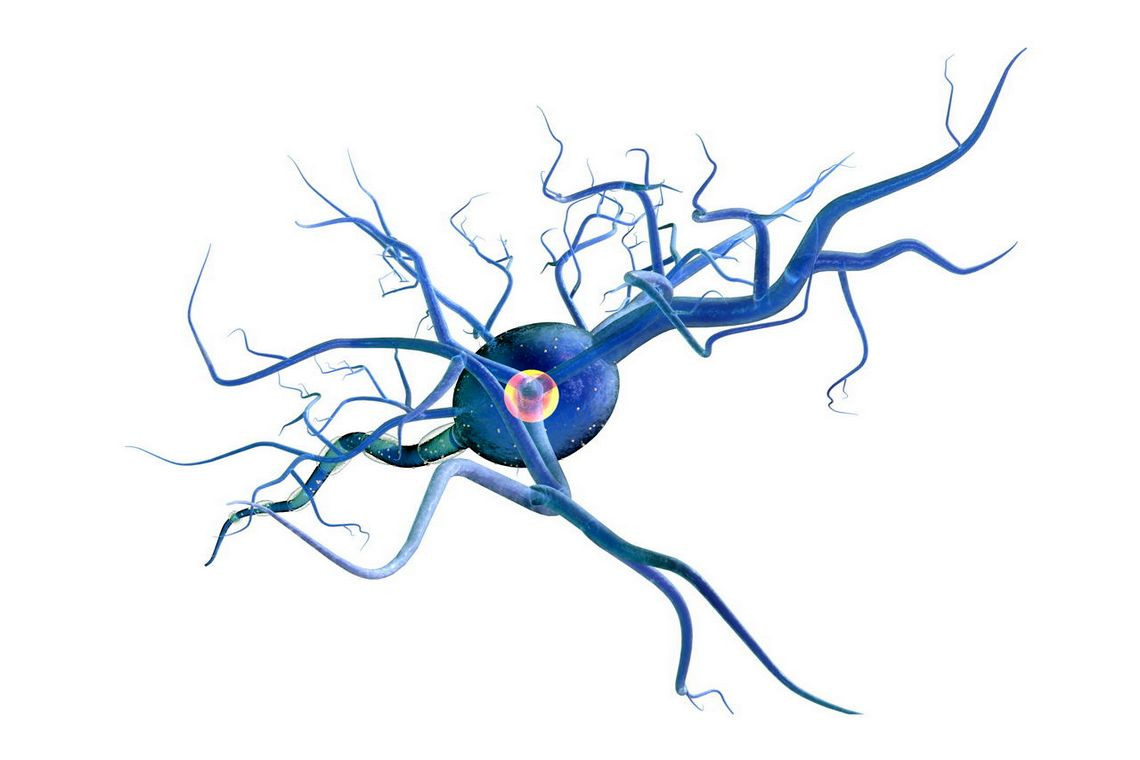Neurons in the vertebrate brain typically have, extending from the cell body, large dendrites which receive inputs from other neurons through connections called synapses. The synapses operate by chemical transmission. When a synaptic terminal receives an all-or-nothing action potential from the neuron of which it is a terminal, it releases a transmitter that crosses the synaptic cleft and produces either depolarization or hyperpolarization in the postsynaptic neuron, by opening particular ion channels. (A textbook such as Kandel, Schwartz, Jessell, Siegelbaum and Hudspeth (2013) gives further information on this process.) Summation ofa number of such depolarizations or excitatory inputs within the time constant of the receiving neuron, which is typically 15-25 ms, produces sufficient depolarization that the neuron fires an action potential. There are often 5,000-20,000 inputs per neuron. Examples of cortical neurons are shown in Figs. 1, furtherexamples are shown in Shepherd (2004), and schematic drawings are shown in Shepherd and Grillner (2010). Once firing is initiated in the cell body (or axon initial segment of the cell body), the action potential is conducted in an all-or-nothing way to reach the synaptic terminals of the neuron, whence it may affect other neurons.

Fig. 1 Examples of neurons found in the brain. Cell types in the cerebral neocortex are shown. The different laminae of the cortex are designated I-VI, with I at the surface. Cells A-D are pyramidal cells in the different layers. Cell E is a spiny stellate cell, and F is a double bouquet cell.) (Adapted from Edward G. Jones and Alan Peters (1984) Cerebral Cortex, Functional Properties of Cortical Cells, volume 2, p. 7, Copyright © Springer Science+Business Media New York.)
Any inputs the neuron receives that cause it to become hyperpolarized make it less likely to fire (because the membrane potential is moved away from the critical threshold at which an action potential is initiated), and are described as inhibitory. The neuron can thus be thought of in a simple way as a computational element that sums its inputs within its time constant and, whenever this sum, minus any inhibitory effects, exceeds a threshold, produces an action potential that propagates to all of its output synaptic terminals. This simple idea is incorporated in many neuronal network models using a formalism of a type described in the next article.



